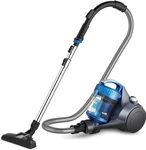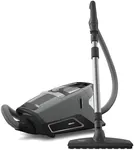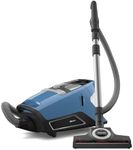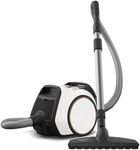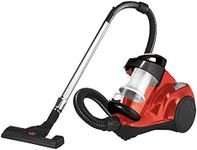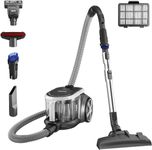Buying Guide for the Best Bagless Canister Vacuums
Choosing a bagless canister vacuum can make cleaning your home more convenient and cost-effective, as you won’t need to buy replacement bags. The right vacuum for you depends on your living space, the types of floors you have, and any specific cleaning needs like dealing with pet hair or allergies. Understanding the main features and how they relate to your lifestyle will help you make a smart choice.Suction PowerSuction power refers to how strongly the vacuum can pull in dirt and debris. This is important because higher suction means better cleaning, especially on carpets or for picking up heavier particles. Suction is often measured in air watts or kilopascals. Lower suction is fine for hard floors and light messes, while medium suction works well for mixed surfaces. High suction is best if you have thick carpets, pets, or lots of dust. Think about your floor types and cleaning challenges to decide how much suction you need.
Filtration SystemThe filtration system determines how well the vacuum traps dust and allergens. This is especially important if you or your family have allergies or asthma. Basic filters capture larger particles, while HEPA filters can trap tiny allergens and dust mites. If you want cleaner air and less dust in your home, look for a vacuum with a HEPA or advanced filtration system. If allergies aren’t a concern, a standard filter may be enough.
Dustbin CapacityDustbin capacity tells you how much dirt the vacuum can hold before you need to empty it. A larger dustbin means you can clean more without stopping, which is helpful for bigger homes or if you vacuum often. Smaller bins are lighter and make the vacuum easier to handle, but you’ll need to empty them more frequently. Consider the size of your home and how often you want to empty the bin when choosing the right capacity.
Weight and ManeuverabilityWeight and maneuverability affect how easy the vacuum is to move around, carry up stairs, or use in tight spaces. Lighter vacuums are easier to handle, especially for people with limited strength or mobility. Heavier models may offer more power but can be harder to move. If you have a multi-story home or lots of furniture, a lightweight and agile vacuum will make cleaning less of a chore.
Attachments and ToolsAttachments and tools expand what your vacuum can do. Common tools include crevice tools for tight spaces, upholstery brushes for furniture, and motorized heads for pet hair. If you have pets, stairs, or want to clean more than just floors, look for a vacuum with the right attachments. If you only need basic floor cleaning, fewer tools may be fine.
Noise LevelNoise level is how loud the vacuum is when running. Quieter vacuums are more comfortable to use, especially in apartments or if you have young children or pets. Noise is usually measured in decibels (dB). Lower numbers mean quieter operation. If noise bothers you, look for models advertised as quiet or with lower dB ratings.
Cord Length and ReachCord length and reach determine how far you can clean before needing to switch outlets. A longer cord or a vacuum with a long hose lets you cover more area in one go, which is useful for larger rooms. If you have a small space, cord length may not matter as much. Think about your room sizes and how often you want to move the plug.
